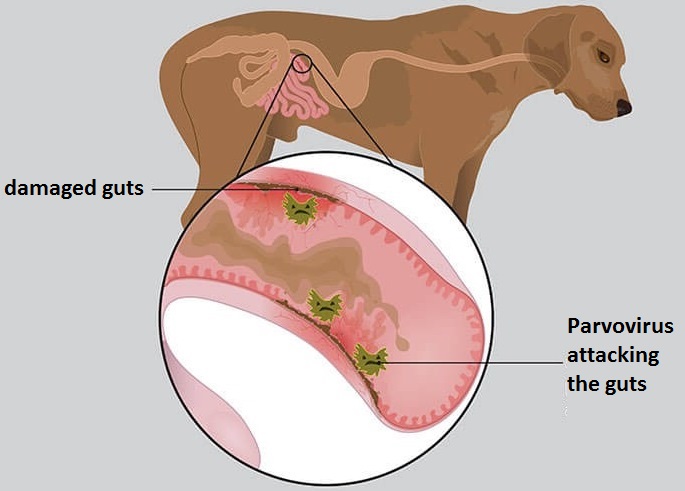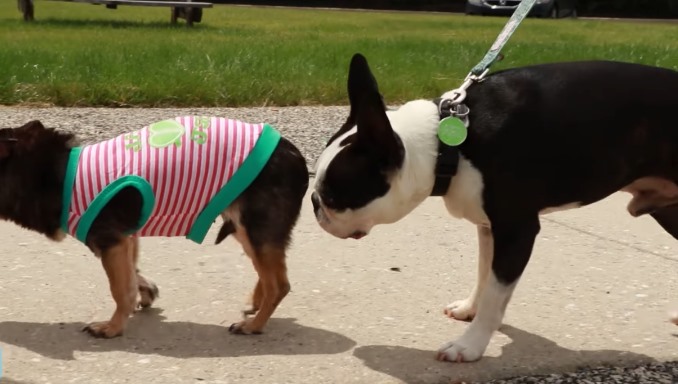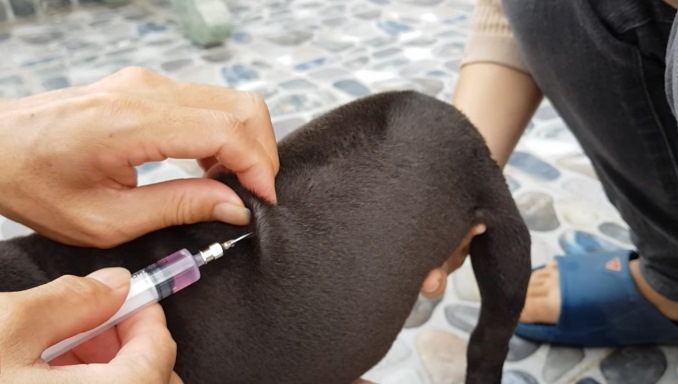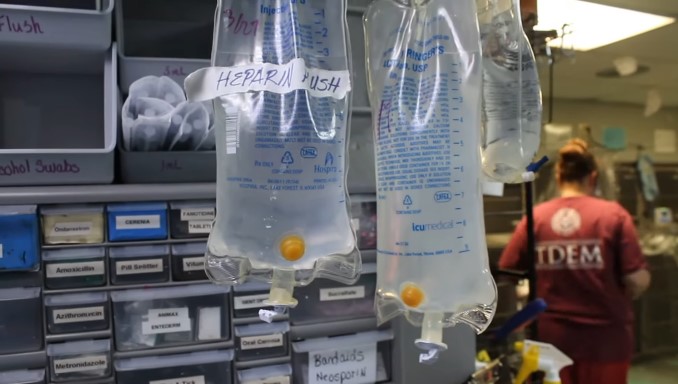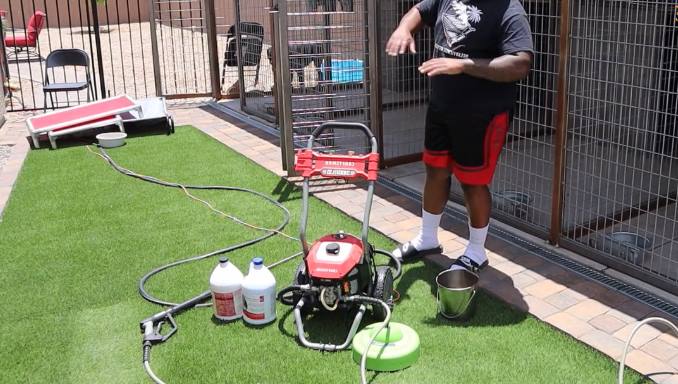What is parvo in dogs? Dogs are susceptible to a variety of diseases, and one of the most serious is canine parvovirus (CPV). This virus can be deadly, but there are ways to protect your pet from it. In this post, we’ll discuss what CPV is, how it’s transmitted, and how you can safeguard your dog against it. We’ll also cover the symptoms of infection and treatment options if your pup contracts parvo. So read on to learn everything you need to know about this dangerous disease.
What Is Parvo In Dogs?
History of ParvoIn the 1970’s, a new disease began to emerge in the dog population. This disease, which would come to be known as parvovirus, or “parvo” for short, was first seen in Europe and quickly spread around the world. The virus is highly contagious and causes severe gastrointestinal illness in dogs. Puppies are especially vulnerable to the disease and can die from it within days.
Parvo or Canine parvovirus (CPV) is a deadly virus that can affect dogs of all ages, but is most commonly seen in puppies. The virus attacks the lining of the stomach and intestines, causing severe vomiting and diarrhea. If left untreated, parvo can quickly lead to dehydration and death. Early diagnosis and treatment is critical for survival.
There are two main types of parvo virus: CPV-1 and CPV-2. CPV-1 is the most common and affects mostly puppies. It is highly contagious and can be spread through contact with infected feces. CPV-2 is less common but more severe, and can affect dogs of any age. It is also highly contagious and can be spread through contact with infected feces.
There is no specific treatment for parvo, but early diagnosis and treatment is critical for survival. Treatment focuses on preventing dehydration and supporting the dog’s immune system. Puppies with parvo will need to be hospitalized and monitored closely. Treatment can be costly, so it is important to talk to your veterinarian about your options and make sure you are prepared financially.
Parvo is a serious disease that can be deadly, so it is important to take precautions to prevent your dog from becoming infected. If you have a puppy, make sure to get them vaccinated against parvo at the recommended age. You should also avoid taking your dog to places where there may be infected dogs, such as the dog park or doggy daycare. If you think your dog may have been exposed to the virus, contact your veterinarian immediately.
How Do Dogs Get Parvo?
There are a few different ways that dogs can get parvo, but the most common is through contact with the feces of an infected dog. This can happen either directly, such as during play or when sharing food and water bowls, or indirectly, such as when walking in an area where an infected dog has been. Parvo is also often spread through contact with contaminated surfaces, such as grass or dirt.
Another way that dogs can get parvo is through direct contact with an infected animal, such as a raccoon or skunk. This is most likely to happen in rural areas where there are more wild animals present.
Finally, puppies are particularly susceptible to getting parvo because their immune systems are not yet fully developed. For this reason, it is important to make sure that puppies are vaccinated against parvo according to the schedule recommended by your veterinarian.
How do puppies get parvo?
There is no definitive answer to this question as there are a number of ways that puppies can contract the parvovirus. However, the most common way for puppies to become infected with parvo is through contact with the feces of an infected dog. This can occur if the puppy comes into contact with contaminated soil or surfaces, or if they eat contaminated food or water. Puppies can also contract the virus from their mother if she is infected. In some cases, puppies may be born with the virus if their mother was infected during pregnancy.
Symptoms Of Parvovirus For Dogs
Dogs that develop the disease show symptoms of the illness within three to ten days There are a number of symptoms associated with Parvo in dogs, and they can vary somewhat from dog to dog. However, the most common symptoms include: Diarrhea that is often bloody and severe, vomiting, loss of appetite, fever, dehydration, weight loss, lethargy and weakness, severe abdominal pain, and depression.
- Diarrhea that is often bloody and severe: This is the most hallmark symptom of Parvo in dogs. The diarrhea is often times so severe that it can cause dehydration very quickly.
- Vomiting: This is another very common symptom and is often times accompanied by the diarrhea.
- Loss of appetite: Dogs with Parvo often stop eating altogether or have a greatly decreased appetite.
- Fever: A fever is often one of the first symptoms that owners notice.
- Dehydration: This can occur quickly due to the diarrhea and vomiting and is often times severe.
- Weight loss: This is a result of the loss of appetite and dehydration.
- Lethargy and weakness: Dogs with Parvo often seem very tired and weak.
- Severe abdominal pain: This is often times the cause of the vomiting.
- Depression: This is fairly common in dogs with Parvo.
Any or all of these factors can lead to shock and death. Younger animals have worse survival rates, as do animals that develop more severe symptoms.
A diagnosis of parvovirus can be made based on the symptoms your dog is showing and a physical examination. Your vet may also recommend laboratory testing, including a complete blood count, biochemical profile, and fecal exam, to help confirm the diagnosis.
Treatment for parvovirus typically involves aggressive supportive care, as there is no specific cure for the virus. Treatment will be focused on preventing dehydration and controlling vomiting and diarrhea. Your dog may need to be hospitalized during treatment and will likely require intravenous fluids and other medications.
If you notice any of these symptoms in your dog, it is important to contact your veterinarian right away. Early diagnosis and treatment is critical for the best possible outcome.
How Long Does Parvo Stay In The Ground?
The virus can live in the environment for up to two years. This means that the virus can remain infectious in the ground long after a sick animal has been removed. Any animal that comes into contact with contaminated soil or objects can become infected with the virus. Parvo is most commonly seen in puppies, but it can affect dogs of any age. The virus is highly contagious and can spread quickly through a dog population. Treatment for parvo is expensive and often requires hospitalization. Prevention is the best way to protect your dog from this deadly disease. Be sure to have your puppy vaccinated against parvo and avoid places where the virus may be present.
How To Prevent Parvo
As a pet owner, it is important to be aware of the dangers of parvo and take precautions to prevent your dog from contracting this deadly virus. Parvo is a highly contagious viral disease that affects dogs of all ages, but is most commonly seen in puppies between the ages of 6 weeks and 6 months. The virus attacks the gastrointestinal system and can lead to severe vomiting, diarrhea, dehydration, and even death. There is no cure for parvo and it is often fatal, so prevention is the best way to protect your dog.
When Do Puppies Get Parvo Shots? How Many Parvo Shots Does A Puppy Need?
The best way to prevent parvo is to make sure your dog is up-to-date on all of his vaccinations. Puppies should receive their first set of vaccinations at 6-8 weeks of age and then boosters every 3-4 weeks until they are 16 weeks old. After that, they will need an annual booster shot to maintain their immunity. If your dog is not up-to-date on his vaccinations, he should not be around other dogs or in any public places where he could come into contact with the virus.
There are a few things you can do to help prevent the spread of parvo if your dog has already been vaccinated.
- First, avoid taking your dog to any public places where there is a high risk of exposure to the virus, such as dog parks, boarding facilities, or grooming salons. If you must take your dog to one of these places, make sure he is on a leash and do not let him come into contact with any other dogs.
- Second, keep your dog’s living area clean and free of contaminated materials. This includes picking up after your dog immediately, disposing of his waste in a sealed bag, and regularly cleaning and disinfecting his bedding, toys, and bowls.
- Finally, if you know or suspect that your dog has been exposed to the virus, contact your veterinarian immediately. Early diagnosis and treatment is critical for the best chance of survival.
By taking these simple precautions, you can help keep your dog safe from parvo and other deadly diseases.
How Much Is A Parvo Shot?
The cost of a parvo shot is typically included in the price of a puppy’s initial vaccinations. The average cost of a puppy’s first set of shots is between $50 and $100, depending on the vet and the location. Booster shots are usually given every 3-4 weeks and cost around $15-20 each. Annual booster shots are typically around $30-50.
Can A Vaccinated Dog Get Parvo?
Yes, a vaccinated dog can still get parvo. The vaccination is not 100% effective and there are many strains of the virus. Also, if a dog comes in contact with the virus and has a weakened immune system, they may still contract the disease.
Parvo is highly contagious and can be deadly, so it’s important to keep your dog up to date on their vaccinations and to take them to the vet for booster shots as recommended. Puppies in particular are at risk for developing parvo before they are fully vaccinated, which is why it is so important to follow the vaccine schedule recommended by your veterinarian.
If you think your dog may have parvo, contact your veterinarian immediately. Early diagnosis and treatment is critical for the best chance of recovery.
Parvo Treatment Cost
The cost of parvo treatment can vary depending on the severity of the disease and the course of treatment recommended by your veterinarian. The average cost of treatment is between $500 and $2,000. Treatment typically includes hospitalization, intensive supportive care, and sometimes blood transfusions. In severe cases, the virus can lead to death, so it is important to seek professional medical help if you think your dog may have parvo.
Parvo is a deadly virus that can affect dogs of all ages, so it’s important to be aware of the symptoms and to contact your veterinarian immediately if you think your dog may be infected. Early diagnosis and treatment is critical for the best chance of survival.
Parvovirus Treatment At Home
There is no home treatment for parvo. If you think your dog has the virus, contact your veterinarian immediately. Parvo is a deadly disease and early diagnosis and treatment is critical for the best chance of survival.
However, if for some reason you cannot take them to the veterinarian, there are some things you can do at home to help them recover.
First, make sure they are getting plenty of rest and fluid. Parvovirus can be dehydrating, so offer your dog lots of water and keep an eye out for signs of dehydration like sunken eyes and a dry nose. You can also give them Pedialyte or Gatorade to help replace electrolytes.
Secondly, feed them small meals of easy-to-digest food. Parvovirus can cause vomiting and diarrhea, so it’s important to give your dog food that won’t make their symptoms worse. Boiled chicken and rice is a good option.
Finally, keep them clean. Parvovirus can cause severe diarrhea, so you’ll need to clean up after your dog frequently. Use disinfectant wipes or bleach diluted in water to clean up any accidents. You should also wash their bedding regularly.
With proper care, most dogs will recover from parvovirus within two weeks. However, some dogs may develop complications like pneumonia or myocarditis, so it’s important to watch for any warning signs and seek veterinary care if your dog seems to be getting worse. Parvovirus is a serious disease, but with quick action and proper care, most dogs will make a full recovery.
What To Feed A Puppy With Parvo?
When your puppy contracts parvo, it can be a scary experience. You may not know what to do or how to help them. One of the most important things you can do is to make sure they are getting the right nutrition.
Puppies with parvo need plenty of fluids and energy to fight the virus. They also need to be able to absorb those nutrients, so feeding them soft, easily digestible foods is important.
There are a few things you should avoid feeding your puppy with parvo. Spicy, fatty, or very sweet foods can make their symptoms worse. You also want to avoid anything that could irritate their stomach or bowels, like raw fruits or vegetables.
The best thing to feed your puppy with parvo is a homemade bland diet. This can be as simple as boiled chicken and rice, or you can use a commercial bland diet designed for puppies with stomach issues. Whatever you choose, make sure it’s soft and easy to eat.
Offer small meals frequently, and make sure they have access to fresh water at all times. With proper care, your puppy should start to recover in a few days.
How To Cure Parvo In Dogs
There is no one definitive answer to the question of how to cure Parvo in dogs, as there are a number of different treatment options available. However, the most important thing to remember if you think your dog may have Parvo is to seek veterinary assistance immediately, as the disease can be fatal if left untreated. With prompt and proper treatment, however, the vast majority of dogs will make a full recovery.
Some of the most common methods of treatment for Parvo in dogs include:
– Intravenous fluids: One of the most important aspects of treating Parvo is to ensure that your dog stays hydrated, as dehydration can be very dangerous. Intravenous fluids are the best way to do this, and your dog will likely need to be hospitalized in order to receive them.
– Antibiotics: Another important part of treatment for Parvo is the use of antibiotics, which can help to prevent secondary infections.
– Pain relief: As Parvo can be a very painful disease, pain relief is often an important part of treatment.
– Nutritional support: Dogs with Parvo can often lose their appetite, so nutritional support in the form of supplements or special diets may be necessary.
Once again, it is important to emphasize that prompt and proper treatment is essential for dogs with Parvo. If you think your dog may have the disease, contact your veterinarian immediately.
How To Test Your Yard For Parvo
If you think your dog may have contracted parvo, it is important to get them to the vet as soon as possible. In the meantime, you can test your yard for the presence of the virus.
To do this, you will need to purchase a parvovirus testing kit from your local pet store or online. Once you have the kit, follow the instructions carefully.
In general, you will need to collect a sample of your dog’s feces and place it in the container provided. You will then send the container to the lab for testing.
The results of the test will take a few days to come back, but it is important to know if your dog has parvo so that you can take the necessary precautions. Treatment for parvo is available, but it is important to catch it early.
If you have any questions about the parvovirus test or how to interpret the results, be sure to talk to your vet. They will be able to help you understand what the test results mean and what you should do next.
How To Get Rid Of Parvo In Your Yard
If your yard has been contaminated with the parvovirus, there are a few things you can do to get rid of it and protect your other animals. First, you’ll need to remove all of the contaminated soil. This can be done by digging it up and disposing of it in a safe manner. You may also want to consider power washing your deck or patio to remove any residual virus particles. Finally, make sure to disinfect all surfaces that may have come into contact with the virus. This includes toys, bedding, and anything else your pet may have been in contact with. By taking these precautions, you can help keep your yard safe for other animals and prevent the spread of the virus.
How To Get Rid Of Parvo In The House
If your dog has parvo, it is important to get rid of the virus as soon as possible. There are a few things you can do to clean your house and get rid of the virus.
1. First, you will need to disinfect all surfaces that your dog has been in contact with. This includes his bedding, toys, and anything else he may have been in contact with. You can use a bleach solution or a commercial disinfectant to do this.
2. Next, you will need to wash all of your dog’s clothing and bedding in hot water. This will help to kill the virus.
3. Finally, you will need to vacuum your entire house to remove any virus particles that may be present. Be sure to dispose of the vacuum bag immediately after use.
By following these steps, you can help to get rid of the parvo virus in your home and keep your dog healthy.
How To Clean Parvo From Couch
If your dog has parvovirus, also known as “parvo,” you’ll need to take extra care to clean your home and prevent the spread of the disease. Parvo is a highly contagious virus that can be deadly for dogs, so it’s important to take precautions. The good news is that with proper cleaning and disinfection, you can help protect your other dogs and prevent the spread of disease.
To clean parvo from your couch, start by vacuuming any areas where your infected dog has been. Pay special attention to crevices and seams, as the virus can easily hide in these areas. Once you’ve vacuumed, thoroughly clean all surfaces with a disinfectant designed to kill parvovirus. Be sure to follow the instructions on the label and allow the surfaces to air dry completely. You should also wash any bedding or towels that your infected dog has used in hot water and bleach.
In addition to cleaning your home, you’ll need to take steps to prevent your other dogs from becoming infected. Parvo is spread through contact with infected feces, so be sure to clean up after your dog immediately. You should also keep your dog away from areas where other dogs have been, such as parks and dog beaches. If your dog does come into contact with an infected area, be sure to wash their feet and legs right away. By taking these precautions, you can help keep your dog safe and healthy.
Can Humans Get Parvo From Dogs?
No, humans cannot get parvo from dogs. Parvovirus is a virus that specifically affects canines. Humans can, however, carry the virus on their clothes or shoes and unwittingly spread it to other dogs if they are not properly disinfected. Parvo is a highly contagious and often deadly disease, so it is important to take precautions to prevent its spread. If you think your dog may have parvo, contact your veterinarian immediately.
FAQs
What causes parvo in dogs?
There is no one definitive answer to this question, as there are various factors that can contribute to a dog contracting parvovirus. However, some of the most common causes include exposure to contaminated feces or objects, ingestion of infected material, and contact with other infected animals. In addition, puppies and young dogs are generally more susceptible to the virus than adult dogs, as their immune systems are not yet fully developed. Therefore, it is important to take precautions to prevent your dog from coming into contact with any potential sources of infection.
How long after parvo vaccine is dog protected?
After your dog has received the parvovirus vaccine, they will be protected against the virus for approximately one year. However, it is important to keep in mind that this vaccine is not 100% effective, so there is still a small chance that your dog could become infected with the virus even after being vaccinated. Therefore, it is important to continue to take precautions to prevent your dog from coming into contact with the virus, such as avoiding areas where the virus is known to be present and keeping them up-to-date on their vaccinations.
How long should a dog with parvo be isolated?
A dog with parvo should be isolated for at least two weeks. However, it is best to consult with a veterinarian to determine the best course of action for your pet.
How long is Parvo contagious?
Parvo is most contagious during the first few days of infection, before symptoms begin to appear. However, the virus can remain in the environment for up to six weeks, so it is important to take precautions to prevent your dog from coming into contact with contaminated areas.
What does parvo poop look like?
When a dog has parvo, their poop will often look bloody and watery. It may also contain mucus or pus. The smell of parvo poop is often described as being incredibly foul. If you think your dog may have parvo, it is important to take them to the vet immediately. Early detection and treatment is critical to preventing serious complications or death.
How common is parvo?
Parvo is a highly contagious virus that can infect dogs of all ages, but puppies are the most susceptible. The virus is shed in the feces of infected dogs and can live in the environment for months. Puppies can become infected with parvo through contact with contaminated soil, water, or other dogs. Symptoms of parvo include vomiting, diarrhea, weight loss, and lethargy. If you think your dog may have parvo, contact your veterinarian immediately. Treatment involves hospitalization and intensive supportive care. With prompt treatment, most dogs recover from the virus. However, some may develop severe complications or die from the disease.
What animals can get parvo?
Parvo is a disease that can affect many different types of animals, but is most commonly seen in dogs. Puppies are especially vulnerable to the virus and can die from it if they are not treated promptly. Other animals that can get parvo include cats, ferrets, and rabbits. Symptoms of the disease include vomiting, diarrhea, lethargy, and fever. Treatment typically involves antibiotics and supportive care. Prevention of parvo is through vaccination.
How long after parvo shot can dog go outside?
How long after a parvo shot can a dog go outside? The answer may vary depending on the veterinarian, but typically it is recommended that dogs wait at least two weeks before going outside. This allows the vaccine time to take effect and help build up immunity. Puppies and young dogs are especially vulnerable to the virus, so it is important to follow the vet’s recommendations. Adult dogs that have been vaccinated are also at risk, so it is important to consult with a veterinarian before taking any risks.
Conclusion
Parvo is a deadly virus that attacks a dog’s intestinal system. It can be prevented through vaccination and good hygiene practices. If your dog contracts parvo, there is treatment available, but it is expensive and the dog may not survive. It is important to keep your pet vaccinated against parvo and other diseases to protect them from this potentially fatal illness.
Above is the article “What is parvo in dogs?”. Thanks for reading!

